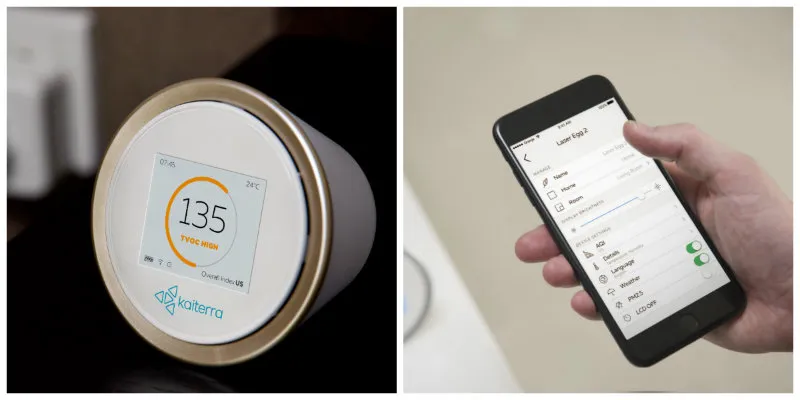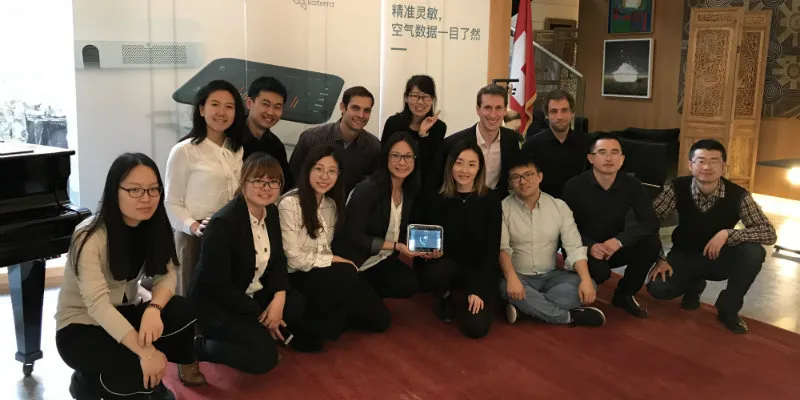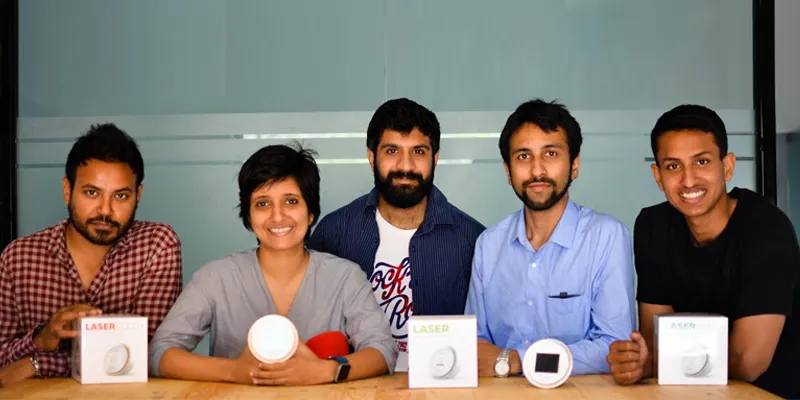Amid rising pollution levels, how Kaiterra helps to keep a check on air quality in Delhi
The Beijing-based firm’s Laser Egg is a smart air quality monitor with high accuracy particulate matter detection.
At a Glance
Startup: Kaiterra Global
Founders: Liam Bates, Wen Xiang and Jessica Lam
Year it was founded: 2014
Where it is based: Beijing, China
Sector: Healthtech
The problem it solves: Monitors and maps the air quality
Funding raised: Undisclosed angel investment
There is enough evidence that air pollution has dangerous ramifications on health, life and livelihood, the recent smog in Delhi being a perfect example. We know that exposure to high levels of air pollutants raises the risk of respiratory infections, heart disease, stroke, lung cancer and multiple other health conditions.
To battle the increasing levels of air pollution in cities, Kaiterra Global was started in 2014 by three friends, Liam Bates, Wen Xiang and Jessica Lam. It creates high accuracy, internet-connected monitors to measure air quality in real time, for the home, for businesses and even for industrial use.
Liam says, “The original motivation behind starting the company was really to fix a problem that was frustrating us, personally. We wanted to measure the air inside our house, but couldn’t find anything on the market to do so. So we built one.”
But what really pushed them to see the value in the product they created was the quick adoption in Beijing and the resulting data that they were able to get their hands on. Liam says, “The real eureka moment came when our first air quality monitor, Laser Egg, started to pop up in thousands of homes across Beijing. We suddenly realised that we were collecting tens of thousands of times more data about air quality than any government in the world, and that this data has the potential to provide deep insight into air pollution and, in turn, influence policy. Essentially, Kaiterra was no longer solving a problem for a few individuals in their own homes, but working towards solving a problem that affects billions of people across the globe. And that’s something we think is worth fighting for.”
The data collected from various devices to analyse pollution, and track sources in real time, is to achieve the ultimate goal of identifying sources of pollution, so that they can be used to fix or improve the air quality around us.
Kaiterra has a series of products under the Laser Egg line that help users better understand the air quality in their premise.
Laser Egg is a smart air quality monitor with high accuracy particulate matter detection.
It uses laser-based light scattering to individually count particles in the air as they enter the device, and calculate PM2.5 concentrations based upon these measurements.

At home or on the go, one can pair the Laser Egg with the Kaiterra app for greater convenience and more control and view home and local air quality readings with just a tap. The app also allows you to see historical graphs by the minute, hour or day and helps you make smarter decisions for your home that last.
Within a few months of launching Laser Egg, Kaiterra was able to expand and launch a product or two every year and is entering a number of new verticals and markets.
A portion of the work done at Kaiterra is also research related, to better understand and ultimately improve air quality.

For the Indian market
According to media estimates, air pollution is a global issue that leads to around seven million premature deaths per year.
For the Indian market, Kaiterra is setting up approximately 50 outdoor air quality monitors across NCR in order to contribute towards World Health Day and World Earth Day and to collect more data that will help build awareness on air quality and also be used for research on how pollution varies over distance and time.
The company’s India CEO, Nita Soans, says, “Kaiterra is working with Evidence for Policy Design (EPoD), New Delhi to set up a new generation of 25 laser-based outdoor air quality monitors across a focused area of South Delhi. The remaining outdoor monitors will be scattered across NCR, covering industrial, outskirts, high density areas and premium real-estate locations. The locations of the outdoor monitors will eventually expand to obtain a high-resolution air quality map of Delhi.”
In the initial phase, the devices will be calibrated for New Delhi as the central location and the user shall be able to view this data on devices compatible with the firm’s mobile app (iOS and Android)
The current team of 20 people is spread across China and India, with the engineering team making up most of it.

Nita says, “In India, Kaiterra is looking to do around $ 1 million in sales this year, and then working to maintain a strong growth rate, as we have in China, of at least 70 percent year on year, going forward.” Initially bootstrapped, it has raised undisclosed amounts of investment from investors based in the US, Europe and Asia.
There are estimates the global air quality monitoring market is growing at around 10 percent year on year.
There are several companies in India and overseas that create devices that map and monitor the air quality.
Some of the devices in the similar space include Nest protect Smoke and Alarms, Awair, Netatmo Weather Station, AirThings Wave, Withings Home and Foobot.
Talking about how Kaiterra is different, Liam says, “One unique feature of the Laser Egg is its smart home capabilities. It supports Apple's HomeKit technology that enables it to safely and seamlessly work with your home’s other smart appliances. No more worrying about when to turn on the user’s air purifier if the air pollution spikes. Or when to turn on one’s humidifier if the air becomes too dry. The Laser Egg enables a connected ecosystem for a protected home and peace of mind.”
For the future, Kaiterra is planning to release more monitoring devices for a wider range of customers and work more on analytics.







